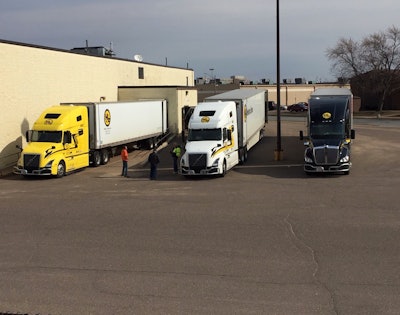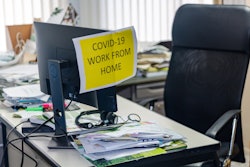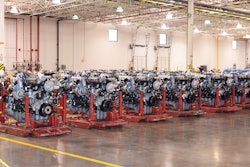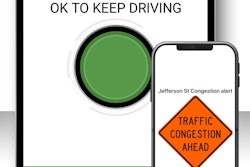 Drivers for Halvor Lines are seen following social distancing protocols at a shipping location.
Drivers for Halvor Lines are seen following social distancing protocols at a shipping location.With many states rolling back workplace restrictions that limited person-to-person contact, motor carriers now find themselves in position to inventory the changes they have made during the coronavirus pandemic, and choose which ones will be permanent.
On May 27, a panel of human resource specialists will discuss how their companies are planning to emerge from the crisis with new standard operating procedures for driver safety, health and business operations. The panel will take place during the virtual CCJ Symposium, “Upshift: How to Find Opportunities During This Challenging Time.”
Panelist Brenda Kraft is vice president of human resources for Kottke Trucking, a refrigerated truckload and less-than-truckload carrier with 225 trucks. Before the COVID-19 outbreak, the Buffalo Lake, Minnesota-based company had started conducting driver orientation training meetings remotely.
From the outset of the crisis, the company drastically changed its driver road test as part of orientation, she said. When drivers arrive at company headquarters to start work, they first conduct a pre-trip inspection with a trainer watching from a distance. Drivers are then monitored by the trainer remotely utilizing the cameras in trucks.
Fleet executives, find out how to keep drivers and keep them safe.
Experts will discuss the challenges drivers are facing on the road and the creative ways fleets are keeping them safe, motivated and moving — during our free, virtual CCJ Symposium on May 27-28. Get Details.
Panelist Chelsea Loining, director of human resources for Halvor Lines, will discuss a new mobile application the company developed to give drivers an electronic bill of lading. Drivers for the flatbed, dry van and refrigerated carrier based in Superior, Wisconsin, can socially distance themselves at shipping and receiving locations by not having to exchange paper proof-of-delivery documents, she said.
“Unfortunately it took a pandemic for us to get to these levels, but at least there is some positive coming out of it,” she said.
Halvor Lines has also made regular communication with drivers the norm to keep them updated on the state of its business and any changes from shippers and receivers. Additionally, the company has opened its fuel network to give drivers more flexibility to stop at locations that are less crowded.
Before coronavirus, online training for drivers was the norm. Drivers complete training modules assigned to them from Halvor Lines’ CarriersEdge platform. What has changed is that new driver hires now go through a virtual orientation process.
Before the crisis, new drivers typically came in on Mondays and stayed through Thursday to go through in-person orientation training. The company put a freeze on hiring inexperienced drivers and has focused its hiring on more experienced candidates.
All presenters for Halvor Lines’ driver orientation training have been recorded so that drivers can view the content from tablets. Drivers also complete their employment and policy paperwork online before they come to its terminal for tractor assignment.
Halvor Lines has gone from an orientation training that lasted three days to one day. The process is more efficient, but “we prefer in-person contact to get to know drivers on a more personal level. One day we’ll get back to that,” Loining said.
The full agenda for the virtual CCJ Symposium can be found here, along with registration information.















